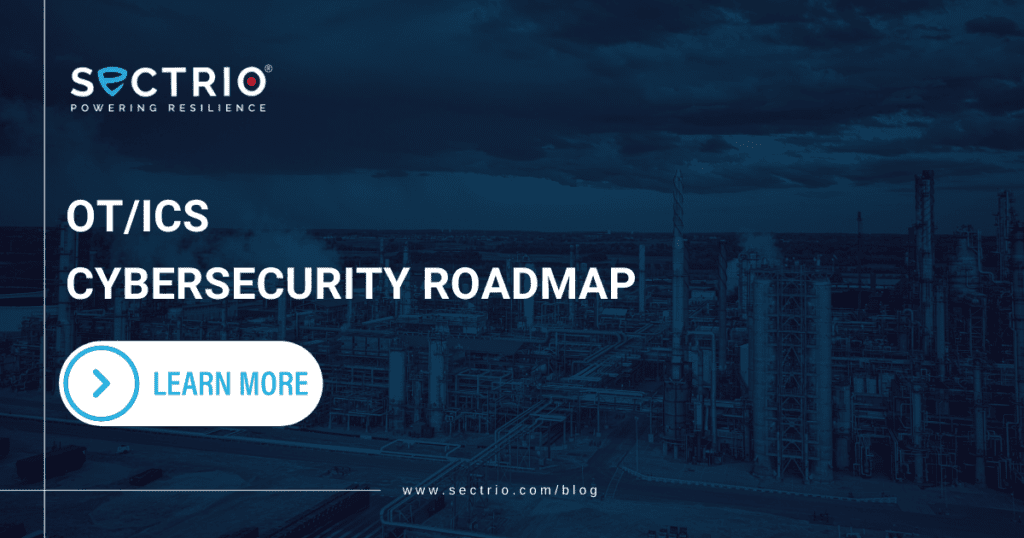OT/ICS Cybersecurity Roadmap
Security in any form is always important. When we discuss cybersecurity, we know how significant it is in the operational technology (OT) and industrial control systems (ICS) topography. It is rapidly evolving; hence, a focused and specialized approach is necessary. These systems are fundamental to the operation of critical infrastructure and industrial processes, and their unique nature makes them particularly vulnerable to cyber threats. This document provides a detailed framework for developing a complete cybersecurity strategy customized for OT and ICS environments. By implementing this roadmap, organizations can significantly improve their security measures, mitigate risks effectively, and ensure the seamless and safe operation of their essential systems. Executive Summary OT and ICS form the backbone of modern industries, playing an important role in sectors such as energy, manufacturing, transportation, and utilities. At present, most of these systems are also connected to IT networks, thus making them vulnerable to cyber threats. These threats can have major outcomes, such as operational disruptions, safety hazards, and financial losses. Given the critical nature of OT and ICS, a robust cybersecurity framework is essential. By designing an appropriate framework organizations can secure operations, ensure the safety of personnel and assets, maintain regulatory compliance, and protect against disruptions that could affect productivity and service delivery. The strategic goals of this cybersecurity framework include: This roadmap gives a detailed approach to identifying and managing risks, executing protective measures, and continuously improving security practices. By taking into account these strategies, organizations can sail through OT/ICS cybersecurity complexities and safeguard their critical operations against an increasingly sophisticated threat environment. OT Cybersecurity Roadmap 1. Assessment and Planning Conduct Risk Assessment Identify Critical Assets Define Security Policies and Procedures 2. Network Segmentation Isolate OT Networks Implement Firewalls and DMZs Establish Secure Remote Access 3. Threat Detection and Response Deploy Intrusion Detection Systems (IDS) Implement Security Information and Event Management (SIEM) Develop Incident Response Plan 4. Access Control Enforce Multi-Factor Authentication (MFA) Implement Role-Based Access Control (RBAC) Conduct Regular Access Audits 5. Patch Management and Vulnerability Assessment Regularly Update OT Systems Conduct Vulnerability Scans Prioritize and Remediate Vulnerabilities 6. Training and Awareness Conduct Regular Cybersecurity Training Promote Security Awareness Programs Simulate Phishing and Social Engineering Attacks 7. Compliance and Monitoring Ensure Compliance with Industry Standards (e.g., NIST, IEC 62443) Continuous Monitoring and Auditing Regularly Review and Update Security Policies Assessment and Baseline Establishment Asset Inventory The first step in fortifying OT/ICS security is to conduct a comprehensive asset inventory. This involves identifying and documenting all assets within the OT/ICS environment, including hardware, software, and communication channels. Accurate asset documentation provides a clear understanding of what needs protection and forms the foundation for subsequent security measures. It is essential to capture detailed information about each asset, such as its function, network connectivity, and any associated vulnerabilities. This inventory should be regularly updated to reflect changes and ensure ongoing accuracy. Risk Assessment Conducting a thorough risk assessment is important for identifying potential vulnerabilities, threats, and impacts specific to the OT/ICS environment. This process involves evaluating each asset and its associated risks, considering factors such as the likelihood of a threat exploiting a vulnerability and the potential consequences. Sign up for a risk assessment today: Contact Sectrio The assessment should cover various threat vectors, including cyber-attacks, insider threats, and physical security risks. By understanding these risks, organizations can prioritize their security efforts and allocate resources effectively to mitigate the most significant threats. Maturity Level Evaluation Evaluating the current cybersecurity maturity level against industry standards, such as NIST or IEC 62443, provides a benchmark for assessing the effectiveness of existing security measures. This evaluation helps identify gaps and areas for improvement, guiding the development of a robust cybersecurity strategy. A maturity level assessment typically involves reviewing policies, procedures, and technical controls to determine how well they align with best practices and standards. Regular evaluations ensure that the organization adapts to evolving threats and maintains a strong security posture. Governance and Policy Development Cybersecurity Governance Establishing a dedicated governance structure for OT/ICS cybersecurity is essential for effective oversight and management. This structure should include clear roles and responsibilities, ensuring accountability for cybersecurity initiatives. A governance framework enables coordinated efforts across different departments and facilitates communication between operational and security teams. It also provides a mechanism for decision-making, risk management, and compliance monitoring, ensuring that cybersecurity remains a strategic priority. Policy Framework Developing and implementing a comprehensive cybersecurity policy framework customized to OT/ICS environments is a must for standardizing security practices. This framework should address key areas such as access control, incident response, and data protection. Policies must be clear, enforceable, and regularly reviewed to ensure they remain relevant and effective. Access control policies should define user permissions and authentication requirements, while incident response policies should outline procedures for detecting, reporting, and mitigating security incidents. Data protection policies must ensure the confidentiality, integrity, and availability of critical information. A well-defined policy framework not only enhances security but also helps in achieving regulatory compliance and building a security-conscious culture within the organization. Network Segmentation and Architecture Segmentation Strategy Implementing a powerful network segmentation strategy is essential to enhance the security of OT/ICS environments. Segmentation involves dividing the network into distinct zones or segments, each isolated from the others based on criticality and function. This isolation minimizes the attack surface and prevents the spread of threats between segments. Specifically, OT/ICS networks should be separated from IT networks to ensure that a compromise in one does not affect the other. By creating secure boundaries, network segmentation helps protect sensitive control systems and limits the potential impact of a security breach. Architecture Review Regularly reviewing and updating network architecture is crucial for maintaining effective security controls. This process involves assessing the current design to identify potential weaknesses or outdated practices. Security reviews should consider the latest threat intelligence and incorporate best practices and advanced technologies. Updating network architecture may include deploying advanced firewalls, intrusion detection systems, and secure communication protocols. Continuous monitoring and regular assessments ensure that the architecture remains resilient
OT/ICS Cybersecurity Roadmap Read More »










